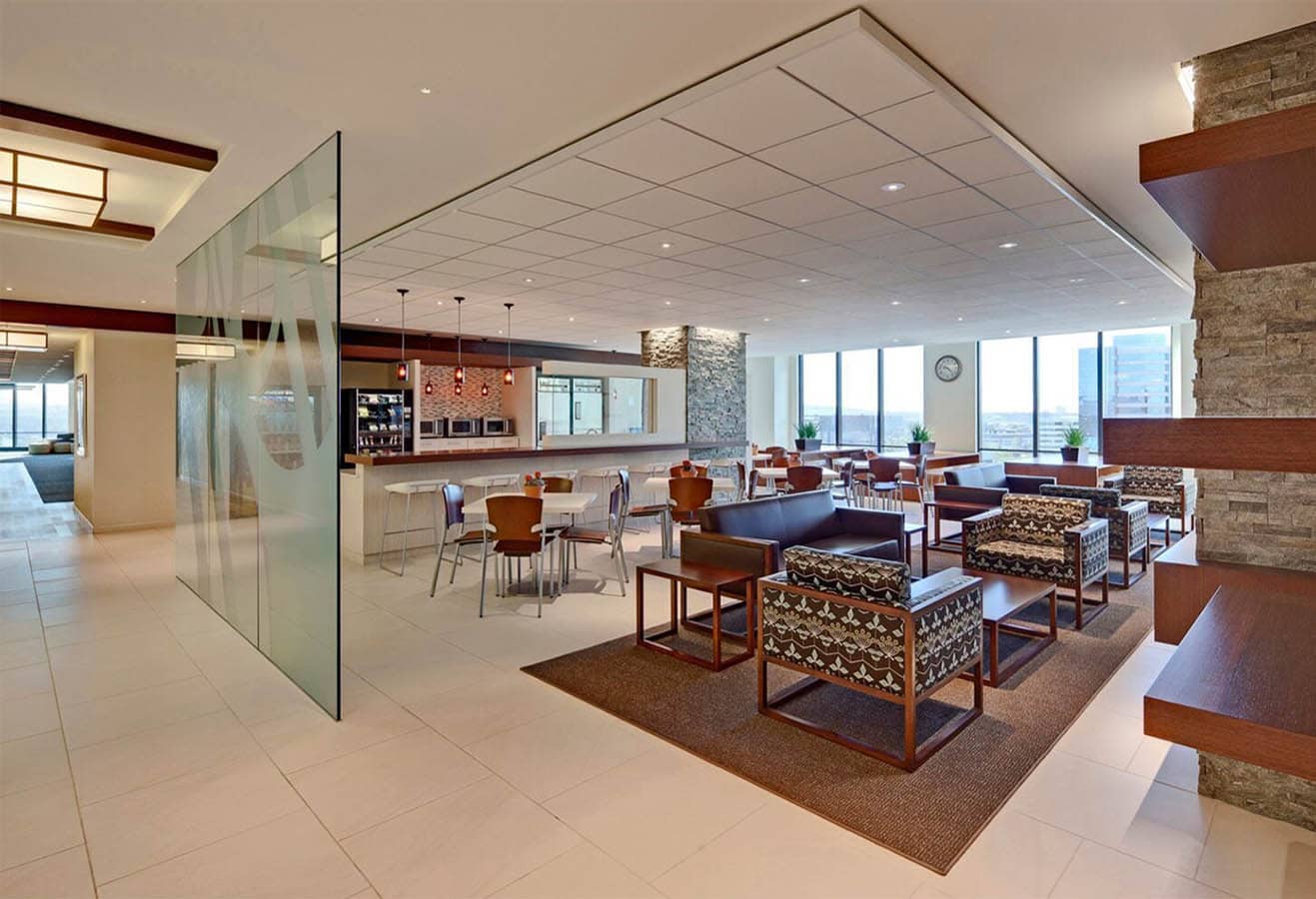
08 Jul Hospitality Trends Influence Office Design
Hospitality Trends Influence Office Design
Blurred lines indicate that fast-moving trends shape the way we live, work and play. One such trend is the influence of the hospitality industry on corporate office design. One designer at the forefront of this trend is Lauren Rottet who believes the trends from the hospitality industry are having a strong impact on commercial office space. This extends well beyond the mere design and décor of the space to programming, space planning, and functionality of the office itself. – Interface
Today, everyone is focusing on design for the people that visit their space including:
- The concept of “work anywhere” – this is seen in the social hub atmosphere of the office, where there is more quality, shared workplace, and less private space.
- Social hubs – flexible, multipurpose rooms with ancillary furniture offer people a comfortable space encouraging people to connect and create more collaboration and social connections.
- Quality of space – more boutique-like, fun, casual, quiet and comfortable.
- A shift of focus from the employer to the employee – with an eye on employee health/wellness and concierge-type services to compete for talent and create employee brand loyalty.
- Biophilic design – living walls and increased nature indoors has become a huge factor in office design. Hotels have moved beyond just vases of flowers and have started creating entire “green” atriums and walls. Workspace design has followed suit, adopting biophilia to reduce stress and help promote renewal at work.
- Local culture – the new trend is for companies to create environments that pay homage to their community.
- The neighborhood – people want to be nearer to services, their homes, and walkable areas. The buildings themselves have to function differently and provide space for people to fluidly communicate.
Other ways hospitality trends are influencing office design:
- Furniture – “Hospitality design has really gone through a dramatic contemporary overhaul in the past decade. Ostentatious décor has been replaced with a simpler, timeless look. The same is true in office design. As more residential furniture and fewer corporate finishes are introduced in the workplace, the more enthusiastic people are about coming to work. Residential design helps create inspiring places that people enjoy working in.” – Red Thread
- Shared Community – There are now a number of neighborhoods and office campuses that focus on the opportunity to face your neighbor in a shared alleyway or to share a driveway and a green space. We see lessons about the shared community in how the workplace is expanding, too.
- Co-Working Spaces. The corporate world has been circling the co-working revolution for some time now. In 2016, GE moved 20 employees from their new energy company, Current, into co-working spaces operated by WeWork. Heineken, Pepsi, The Guardian, and pharmaceutical company Merck all have employees working out of coworking spaces. Corporations are the fastest growing client base for the co-working industry.
Sources:
https://www.keyinteriors.us/blog/food-industry-office-design-3-tips-to-create-the-ideal-workplace
https://blog.interface.com/hospitality-comes-to-the-office/
https://www.metropolismag.com/interiors/workplace-interiors/the-influence-of-hospitality-in-the-workplace/



















